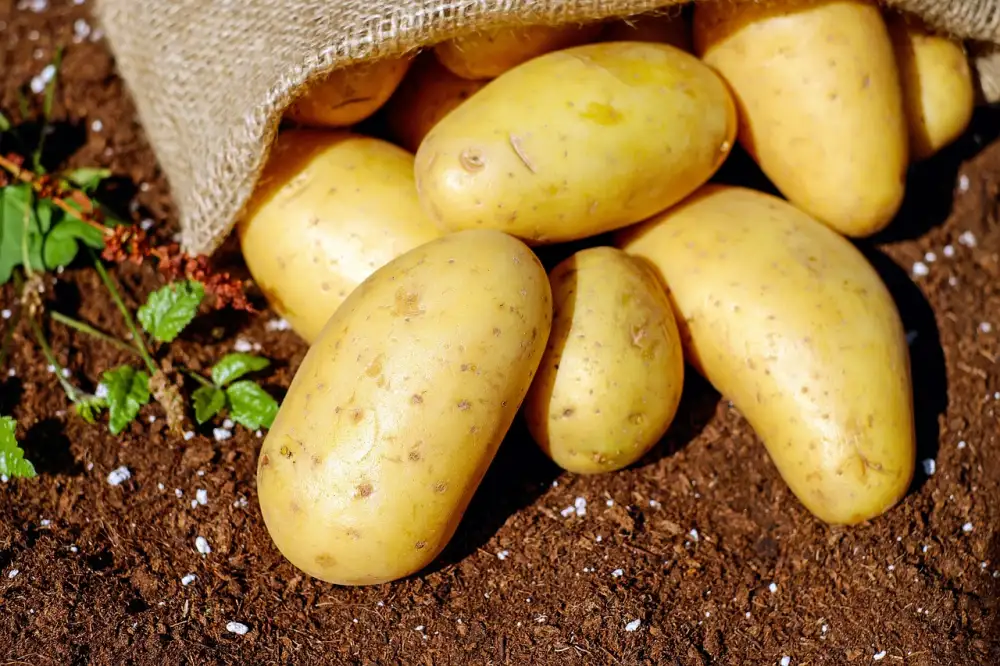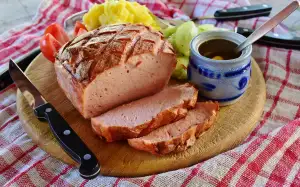Master the Art of Hasselback: A Guide to Perfectly Slicing and Cooking Potatoes

- History and origin of Hasselback
- Benefits of using the Hasselback method
- Step-by-step guide to Hasselback slicing
- Popular vegetables for Hasselback recipes
- Hasselback variations and creative fillings
- Tips for achieving the perfect Hasselback dish
- Serving suggestions and pairing options
- Hasselback recipes from around the world
The Hasselback technique is a culinary method that involves making evenly spaced cuts along the length of a vegetable, creating a fan-like appearance when cooked. This unique slicing technique not only enhances the presentation of the dish but also allows for even cooking and a delightful combination of textures. Whether you're a seasoned chef or an amateur cook, mastering the art of Hasselback will elevate your vegetable dishes to new heights. Join us as we delve into the world of Hasselback and discover the secrets behind this impressive culinary technique.
History and origin of Hasselback
The Hasselback technique, known for its beautiful presentation and delicious flavor, has a rich history that dates back to the 18th century. Originating in Sweden, the method was named after the Stockholm restaurant where it was first introduced - Hasselbacken. The head chef at Hasselbacken, Leif Ellison, created this unique way of preparing potatoes by making thin slices along the entire length of the vegetable without cutting all the way through. This allowed the potato to fan out while baking, creating a crispy exterior and a soft and creamy interior. The dish gained popularity throughout Scandinavia and eventually spread worldwide as a versatile and visually appealing cooking technique. Today, Hasselback is not only associated with potatoes but also used for various vegetables like zucchini, sweet potatoes, and even apples. Its history may be rooted in Sweden, but its influence can be seen in kitchens across the globe.
Benefits of using the Hasselback method
The Hasselback method offers several benefits that make it a popular technique for cooking vegetables. Firstly, the sliced edges of the vegetables become crispy and caramelized, adding a delightful texture to the dish. Secondly, the thin slices allow for even cooking, ensuring that each bite is cooked to perfection. Additionally, the Hasselback method allows for easy seasoning and flavor absorption as the spices and seasonings can penetrate through the slices. Lastly, this technique enhances presentation, turning ordinary vegetables into visually stunning dishes that are sure to impress your guests.
Step-by-step guide to Hasselback slicing
1. Start by choosing firm and evenly sized vegetables like potatoes or zucchini.
2. Place the vegetable on a cutting board and make thin, even slices along its length, about ¾ of the way through.
3. To ensure even spacing between the slices, you can place chopsticks or wooden spoons on either side of the vegetable as a guide.
4. Be careful not to cut all the way through, as you want the slices to remain attached at the bottom.
5. Repeat this process for all the vegetables you plan to Hasselback slice.
6. Gently fan out the slices to create an attractive presentation.
7. Brush with melted butter or oil and season with salt, pepper, herbs, or spices of your choice.
8. Bake in a preheated oven until golden brown and crispy on the outside while tender on the inside.
9. Serve hot and enjoy your perfectly sliced and cooked Hasselback vegetables!
Popular vegetables for Hasselback recipes
Popular vegetables for Hasselback recipes include potatoes, sweet potatoes, zucchini, butternut squash, and eggplant. These vegetables are ideal for the Hasselback technique because they have a firm texture that holds up well during slicing and cooking. The thin slices of the vegetable open up like a fan when cooked, creating a visually stunning dish. Additionally, these vegetables have a mild flavor that pairs well with various seasonings and fillings. Whether you prefer the classic Hasselback potato or want to experiment with different vegetables, there are endless possibilities to explore with this versatile cooking method.
Hasselback variations and creative fillings
Hasselback variations offer endless possibilities for creative fillings. From traditional herbs and spices to unique combinations, you can experiment with different flavors to suit your taste. Some popular options include garlic and Parmesan, bacon and cheddar, or even pesto and mozzarella. Don't be afraid to think outside the box and try unconventional fillings like caramelized onions, sun-dried tomatoes, or feta cheese. The key is to choose ingredients that will complement the natural flavors of the vegetable and enhance the overall dish. Get creative and let your imagination run wild with Hasselback!
Tips for achieving the perfect Hasselback dish
To achieve the perfect Hasselback dish, here are some essential tips:
1. Choose the right potatoes: Opt for starchy potatoes like Russet or Yukon Gold, as they hold their shape well during cooking.
2. Use a sharp knife: A sharp knife ensures clean and precise cuts, preventing the potatoes from falling apart.
3. Create a stable base: To prevent the potato from rolling around while slicing, place it between two chopsticks or wooden spoons.
4. Don't cut all the way through: Leave about 1/8 inch at the bottom to keep the potato intact and maintain its shape.
5. Brush with oil or butter: Coating the potato with oil or melted butter before baking helps achieve a crispy and golden exterior.
6. Season generously: Sprinkle salt, pepper, and your choice of herbs or spices between each slice to infuse flavor throughout the potato.
7. Bake at high temperature: Preheat your oven to around 425°F (220°C) for a perfect balance of crispiness and tenderness.
8. Baste during cooking: Every 15-20 minutes, brush the potatoes with additional oil or butter to keep them moist and enhance browning.
9. Test for doneness: Insert a fork into the thickest part of the potato; if it easily goes through, they're ready to be served!
10. Allow resting time: Letting the Hasselback potatoes rest for a few minutes after baking allows them to firm up slightly before serving.
Serving suggestions and pairing options
When it comes to serving and pairing options, the Hasselback technique offers endless possibilities. These beautifully sliced and cooked vegetables can be served as a side dish alongside roasted meats or grilled fish. They also make a stunning centerpiece for vegetarian meals.
For a classic pairing, serve Hasselback potatoes with a dollop of sour cream or a drizzle of melted cheese. The creamy texture complements the crispy edges of the potatoes perfectly. You can also top them with crumbled bacon, chopped herbs, or even caramelized onions for added flavor.
If you're looking for a lighter option, try serving Hasselback zucchini or eggplant with a fresh tomato salsa or tzatziki sauce. The vibrant colors and refreshing flavors will elevate your meal to new heights.
For an exotic twist, pair Hasselback sweet potatoes with a spicy yogurt dip or a tangy mango chutney. The combination of sweet and savory flavors will leave your taste buds craving for more.
Don't limit yourself to just potatoes; other vegetables like carrots, butternut squash, and even apples can be transformed into delicious Hasselback creations. Experiment with different fillings such as cheese, herbs, nuts, or dried fruits to add depth and complexity to your dishes.
Remember to garnish your Hasselback creations with fresh herbs like parsley or dill to add visual appeal and freshness. And don't forget to serve them hot out of the oven for that irresistible crispiness.
With its versatility and elegance, the Hasselback technique is sure to impress your guests and elevate any meal from ordinary to extraordinary. So go ahead and embrace this culinary art form in your kitchen today!
Hasselback recipes from around the world
Hasselback recipes have gained popularity worldwide, with each region adding its own unique twist to this versatile technique. In Sweden, the birthplace of Hasselback potatoes, they are traditionally served with lingonberry sauce and Swedish meatballs. In America, bacon-wrapped Hasselback sweet potatoes are a favorite during Thanksgiving. In Italy, zucchini Hasselback is often flavored with garlic and Parmesan cheese. India offers a spicy twist with masala Hasselback eggplant. No matter where you are in the world, there's a delicious Hasselback recipe waiting to be discovered!
In conclusion, the Hasselback technique is a game-changer when it comes to vegetable dishes. Its unique slicing method allows for beautiful presentation and enhanced flavors. Whether you're a seasoned chef or a home cook, mastering the art of Hasselback will take your culinary skills to new heights. So why not embrace this technique and explore the world of stunning Hasselback vegetable dishes? Your taste buds will thank you!
Published: 27. 11. 2023
Category: Recipes



